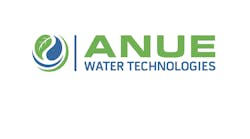STANFORD, Calif. — Feb. 10, 2016 — Researchers at Stanford University developed strategies to bring the nation’s water infrastructure into the 21st century based on lessons learned from the energy sector, according to a press release.
The new report identifies financing tools and techniques from the electricity sector which have the potential to bridge the financing gap to next-generation water systems.
“Our sophisticated water system is slowly reaching the end of its lifetime and is in need of renewed investment due to population growth, urbanization, climate change impacts, environmental degradation, aging infrastructure, and ever-increasing operation and maintenance costs,” commented report co-author Newsha Ajami, director of urban water policy at Stanford’s Water in the West program, in the release. “Tackling these modern challenges calls for new thinking and innovative, multipurpose infrastructure solutions.”
Among the approaches recommended by the authors is the use of water projects called “distributed solutions,” which are designed to be implemented at a local level. Examples include green infrastructure built to manage stormwater, or homes and offices designed to flush toilets with gray water rather than potable water.
According to the researchers, providing incentives for such small- to medium-scale projects at the local level can be more efficient and economical than relying on more traditional funding models.
The report also says that regulations such as direct enforcement, economic incentives and innovative pricing structures that have proved successful in the electricity sector could be used to promote adoption of innovative water projects; and the water sector could take advantage of a diverse set of public and private funding sources, including bonds, end-user fees and venture capital.
To facilitate the flow of funding, once funding for a project has been acquired stakeholders should be able to access these funds through resource pathways such as loans and grants, rebates, tax credits and on-bill initiatives, the authors said. This could be used to promote cost-sharing opportunities among customers or to eliminate upfront costs.
Lastly, the report calls for innovative governance structures to help manage project implementation, such as net metering, end-to-end service companies and project or financial aggregation.
You can find the entire release here.


